How to grow fuchsias in pots – for vibrant and long-lasting container plants
By following a few simple rules, your pot-grown fuchsias will thrive


Learning how to grow fuchsias in pots is a great way to add vibrant and long-lasting color to your containers. With their bold, trumpet-like blooms, fuchsias will reliably flower from spring until fall, adding structure and impact wherever they are planted.
Growing fuchsias in pots is an ideal solution if you are gardening in a small space, such as on a balcony or patio. As a gardener, I find growing in pots a great way to add variety to any outside space, and by changing textures and colors each year you can maintain interest and keep your yard looking and feeling fresh.
There are many different varieties of fuchsia, found in a range of colors, so there is sure to be a type of fuchsia that works for you. This year, I have enjoyed the all-white 'Hawkshead' variety, which can be paired with any plant and looks particularly elegant in a pot. So, if you are looking for container gardening ideas this year, fuchsias should be a consideration.

How to grow fuchsias in pots
When considering how to care for fuchsias, it is important to remember there are two categories: tender and hardy. Both of these can be grown in pots, but tender varieties must be protected during the winter or will be lost during cold snaps. Hardy options are typically varieties of Fuchsia magellanica, a species native to the southern tip of South America where the climate is a constant challenge. Unsurprisingly, hardy varieties can easily tolerate wind, rain and snow, and so are popular plants in cooler US hardiness zones across the Northern Hemisphere.
Growing advice for fuchsias in pots
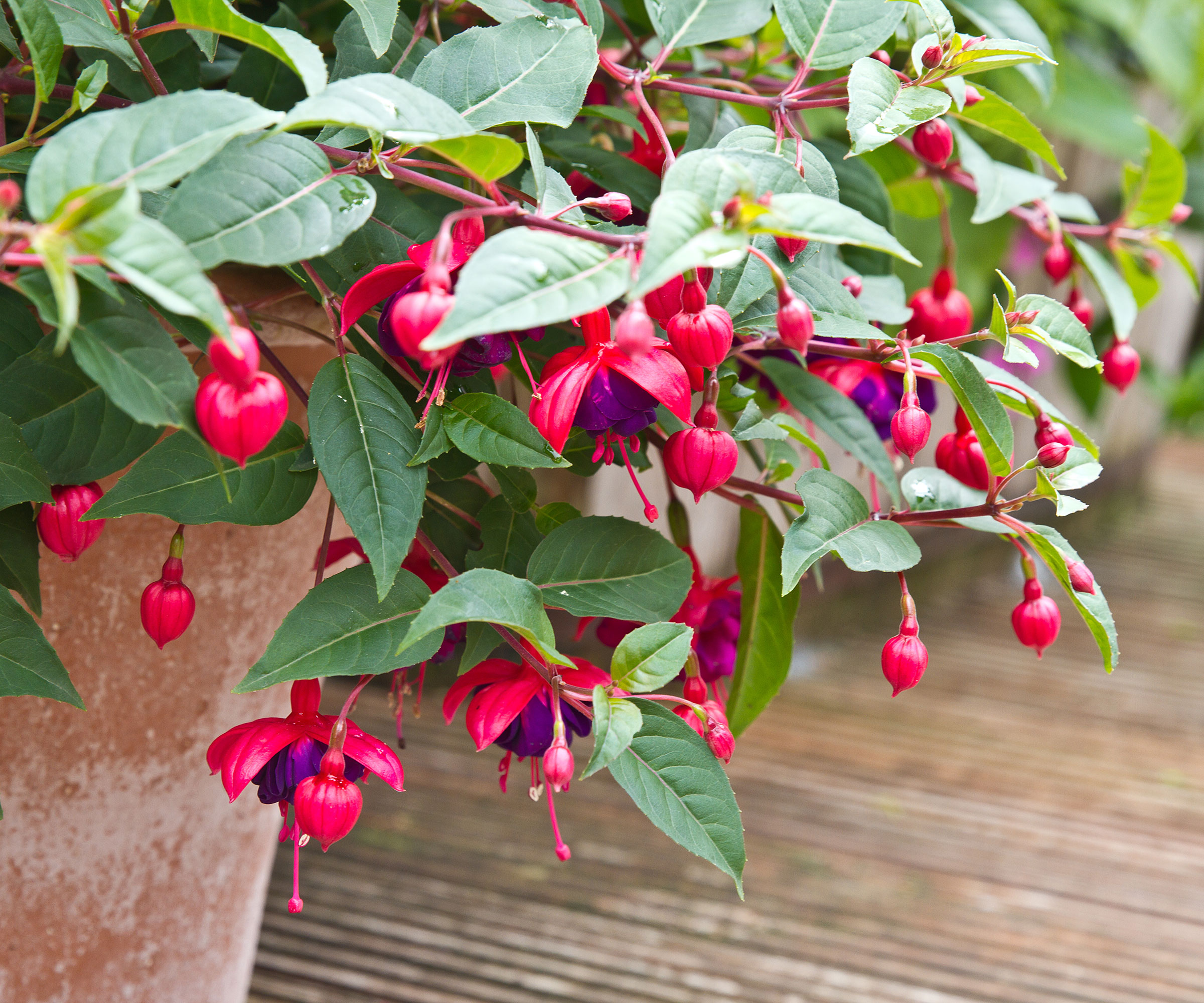
Fuchsias are some of the best container plants for pollinators, known to attract bees, butterflies and hummingbirds. With colorful, nectar-rich blooms, adding one or two fuchsias plants to your pots is a good idea if you are seeking wildlife garden ideas.
'Fuchsias do very well when planted in containers,' says plant expert, Katie Sunderlage. 'Whether you grow tender or hardy varieties, fuchsias are a great option, filling any space with colorful blooms.
'I love the trailing or cascading fuchsia varieties for growing in pots,' Katie adds. 'They look so elegant with their foliage and blooms hanging down and covering the base of the container.' One trailing variety with bold colors is 'Blue Eyes', available to order via Amazon. With clashing pink and purple flowers, 'Blue Eyes' is ideal if you enjoy a maximalist aesthetic.
'Choose a pot that can accommodate the size of your fuchsia after a season of growth,' Katie says. 'Generally, it is recommended to use a 12-inch pot for each plant if you are only growing one plant in one pot.' When growing multiple plants per pot, be sure to use a larger container to give your plants more room to grow.
'Make sure there are drainage holes and choose potting soil that is good quality,' Katie adds. 'Soil should be kept moist but not saturated or waterlogged, as your plants will not like this.' Organic potting soil is available to buy from Walmart.
'It is important to monitor the soil during the warmer months of the year, never allowing the soil to dry out completely.' As Katie says, watering your pots is a crucial job as part of your summer gardening checklist.
While most fuchsia species can be grown in darker spots, for example, they are ideal plants for a shaded balcony, providing 'some morning or late evening sun will produce the best results,' Katie says. 'Just be sure to protect your plants from the hot afternoon sun, especially in warm climates,' such as US hardiness zone 9 and above.
It is a good idea to remember to fertilize fuchsia plants during the growing season, particularly when grown in a pot. This is best done during the spring and summer, feeding with a bloom booster fertilizer, available from Amazon, that will encourage flower production late into the season.
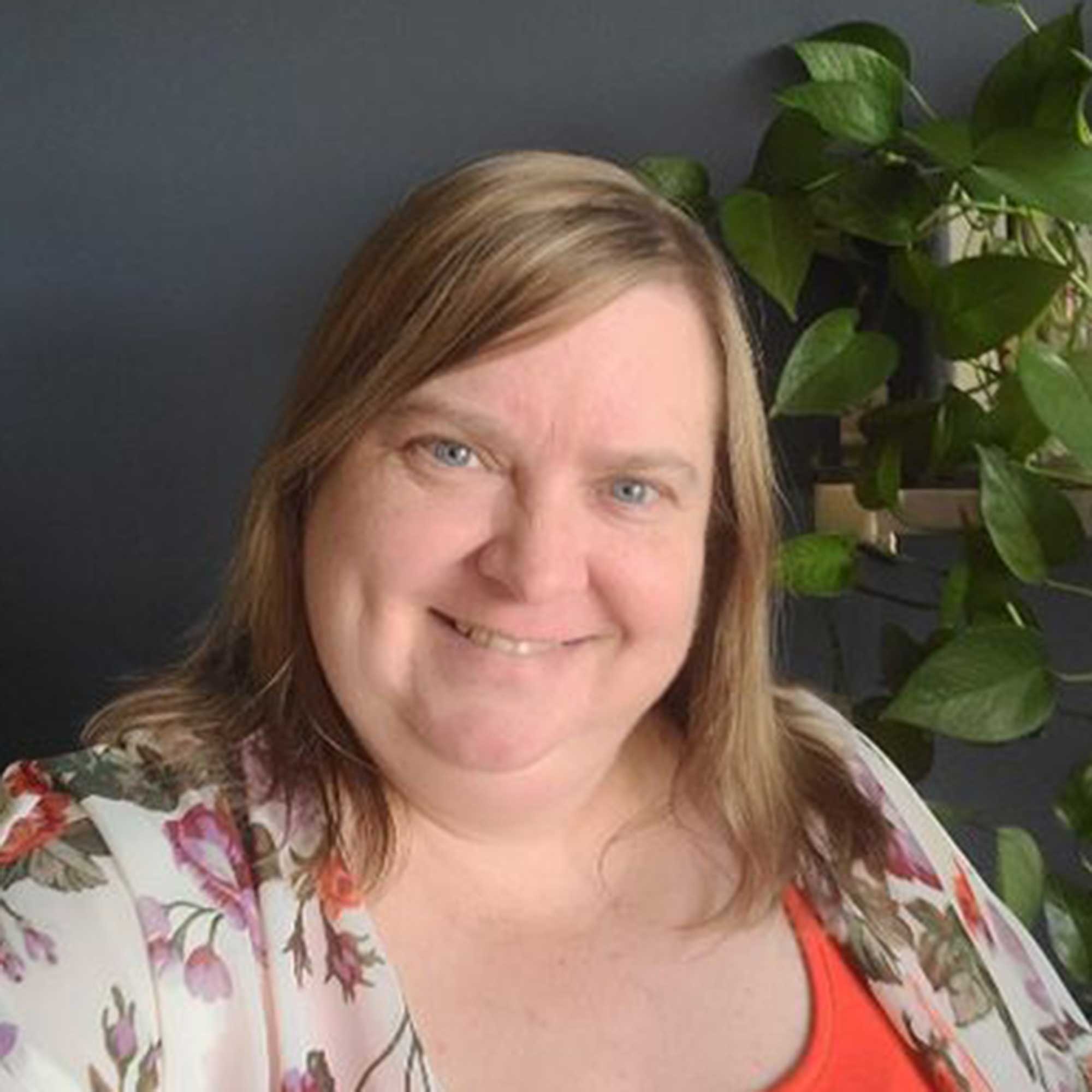
Operations Manager at Holland Group, managing the customer service department and purchasing. Katie has been in the green industry since 2005 in the Greater Milwaukee area, earning her degree in Horticulture in 2008. She has been able to share her love for plants working in multiple garden centers, in sales positions and most recently in an online retail platform at Holland Group.
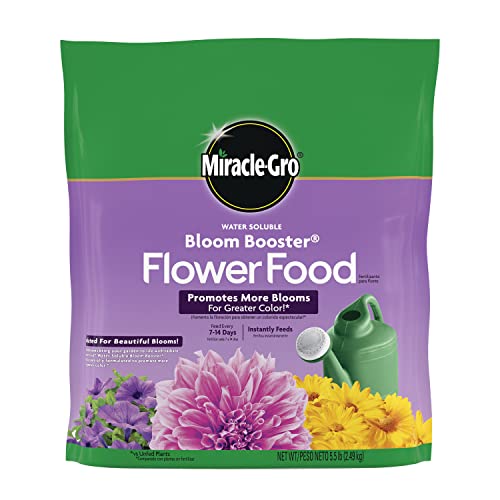
This feed promotes flower production, helping to encourage your plants to continue blooming late into the season.
Recommended fuchsia varieties for pots
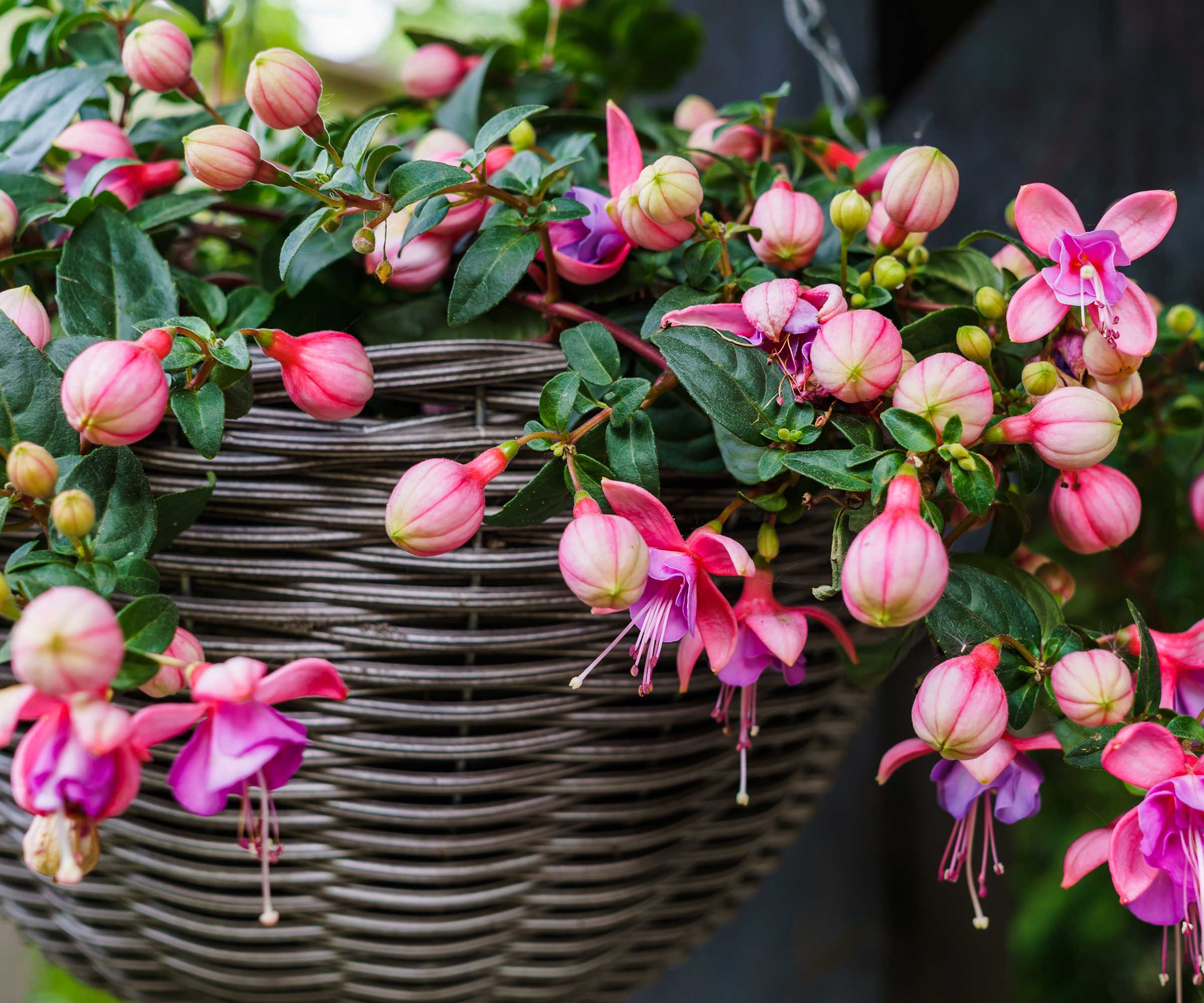
'One of my favorite varieties is 'Eruption' which is a beautiful trailing option,' Katie says. 'In summer, it is absolutely full of beautiful, pink, pendulous blooms. They work perfectly in a hanging basket or pot and really make a colorful statement in a shady location. What's more, they will bloom all summer and even into fall in most climates.' Many different trailing fuchsia plants are available to order via Amazon.
'I am also a fan of the 'Wicked Queen' variety for many reasons,' Katie continues. 'This fuchsia is one of the most hardy options on the market, and has an attractive semi-upright habit, with stunning pink blooms, adding vibrant height and structure to pots and displays.'
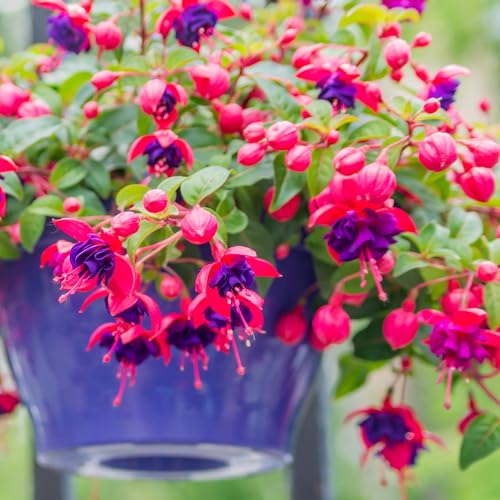
With vibrant pink and purple blooms, 'Blue Eyes' is sure to turn heads in your garden. These live plants will quickly grow and fill your pots.
FAQs
Should I move my fuchsia pots indoors during the winter months?
This will depend on the fuchsia variety you grow. 'Many tender species are not tolerant of cold climates,' says plant expert, Katie Sunderlage, 'so it’s best to bring them indoors or provide protection when the temperatures drop. One option is to place the fuchsia pot in a garden shed or greenhouse, where it will be protected from wind, snow and frost.' You can then bring the pot back outdoors in spring.
If you are looking to increase your fuchsia collection this year, one free and fun option is to propagate your plants. Fortunately, fuchsias are some of the easiest plants to take cuttings from, and learning how to take fuchsia cuttings is a simple process that can be done during late summer with a high chance of success. Our guide has all the information you need and will ensure that your pots are full of colorful fuchsia blooms next year.
Sign up to the Homes & Gardens newsletter
Design expertise in your inbox – from inspiring decorating ideas and beautiful celebrity homes to practical gardening advice and shopping round-ups.

Thomas is a Content Editor within the Gardens Team at Homes and Gardens. He has worked as a professional gardener for both public spaces and private estates, specializing in productive gardening, growing food and flowers. Trained in Horticulture at the Garden Museum, he has written on gardening and garden history for various publications, including The English Garden, Gardens Illustrated, Hortus, The London Gardener and Bloom. He has co-authored a Lonely Planet travel book, The Tree Atlas, due out in 2024.
-
 Should you dry your clothes outside if you have hayfever? Allergy specialists warn sufferers to steer clear of this 'major trigger'
Should you dry your clothes outside if you have hayfever? Allergy specialists warn sufferers to steer clear of this 'major trigger'Doing so can trigger asthma, coughing, itchy eyes and more
By Sophie Warren-Smith
-
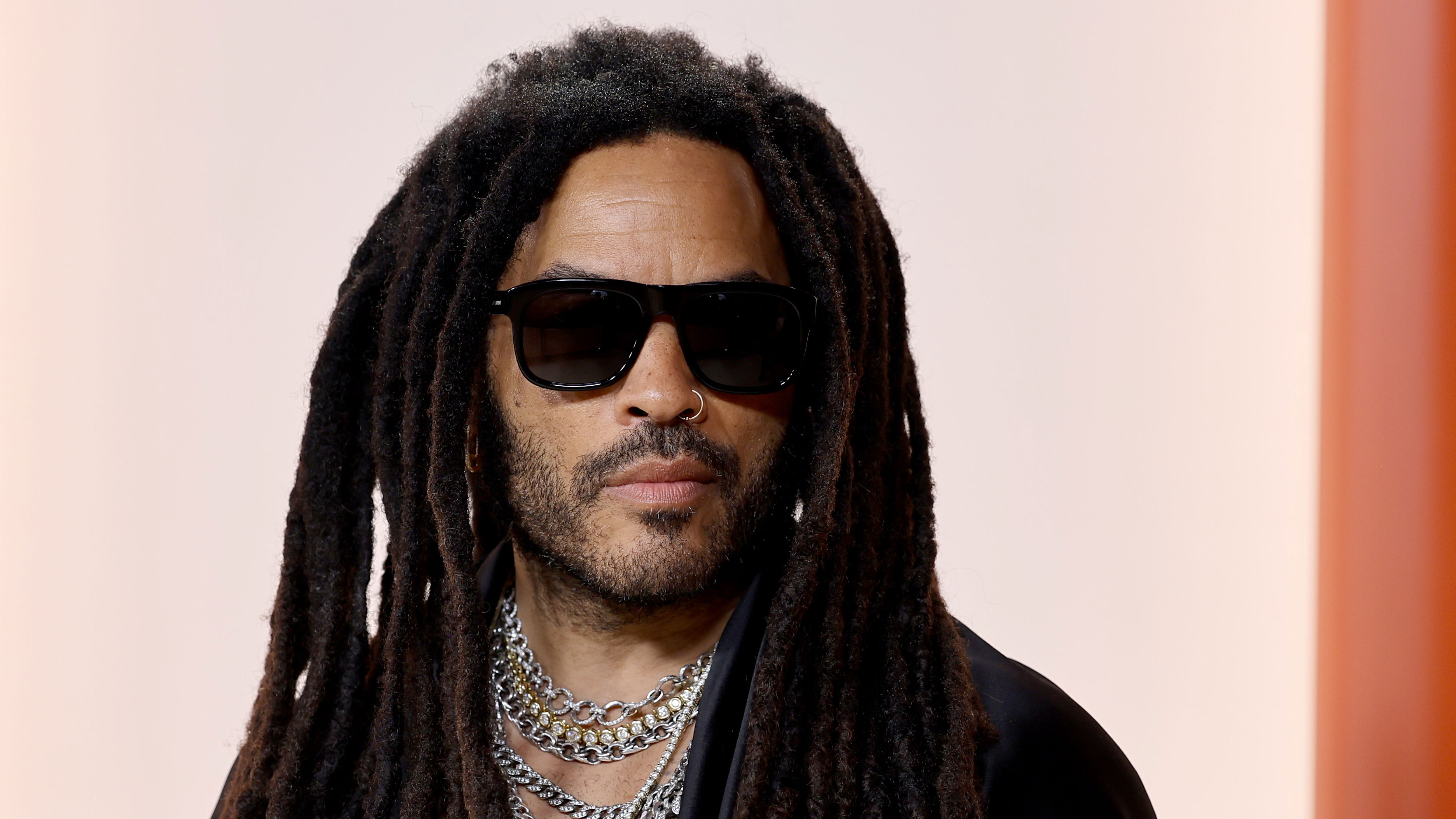 Lenny Kravitz says design is 'just like music' – and the stunning materials of this bedroom embody this laidback luxe approach
Lenny Kravitz says design is 'just like music' – and the stunning materials of this bedroom embody this laidback luxe approachRich textures and opulent finishes come together in a Los Angeles bedroom designed by the musician – it's ultra-chic, but relaxed
By Sophie Edwards
-
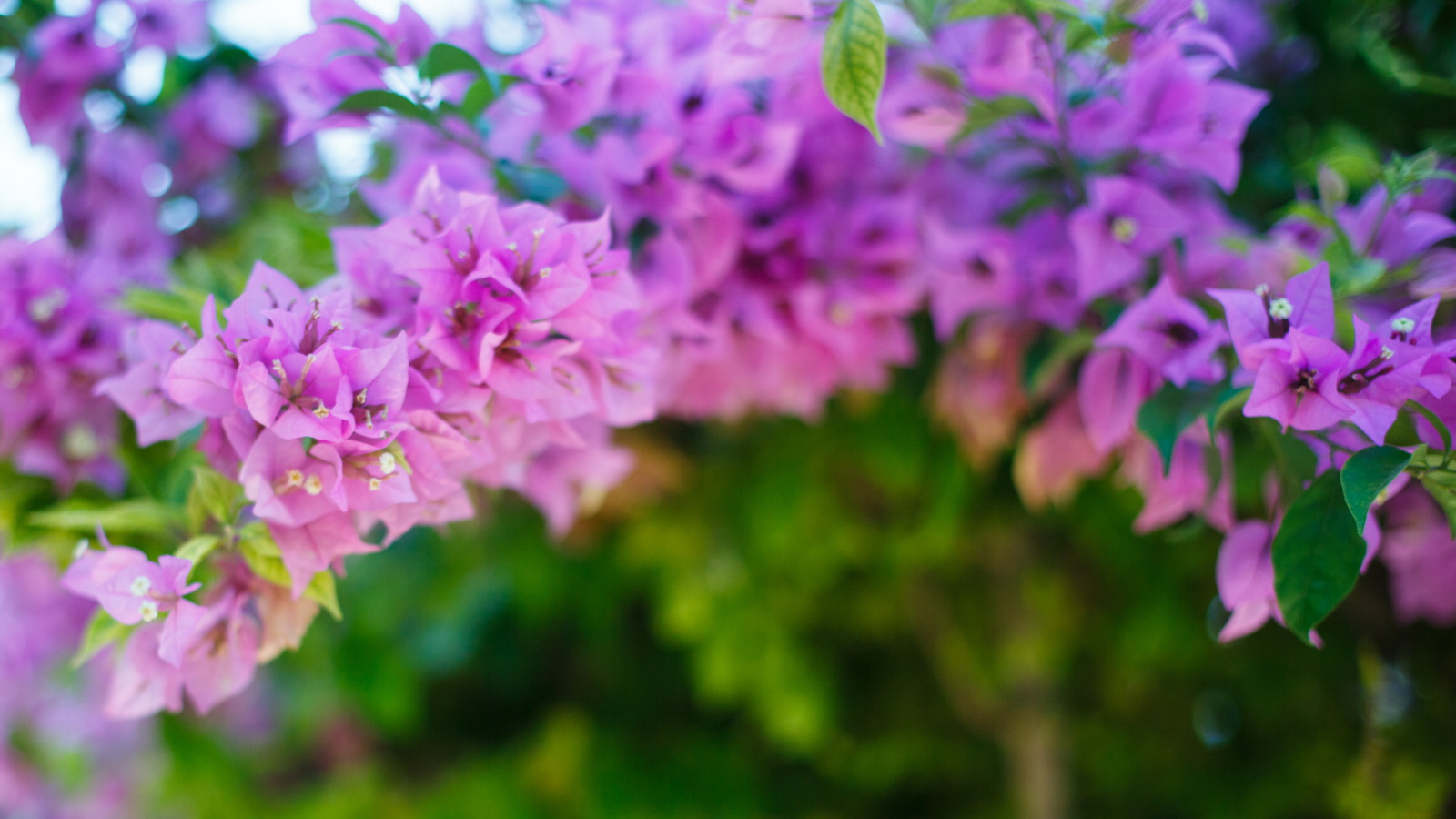 Best climbers to grow in pots – 5 easy-to-grow vines that will transform small spaces with vibrant color
Best climbers to grow in pots – 5 easy-to-grow vines that will transform small spaces with vibrant colorMake the most of small terraces, patios and balconies by filling pots with colorful climbers
By Thomas Rutter
-
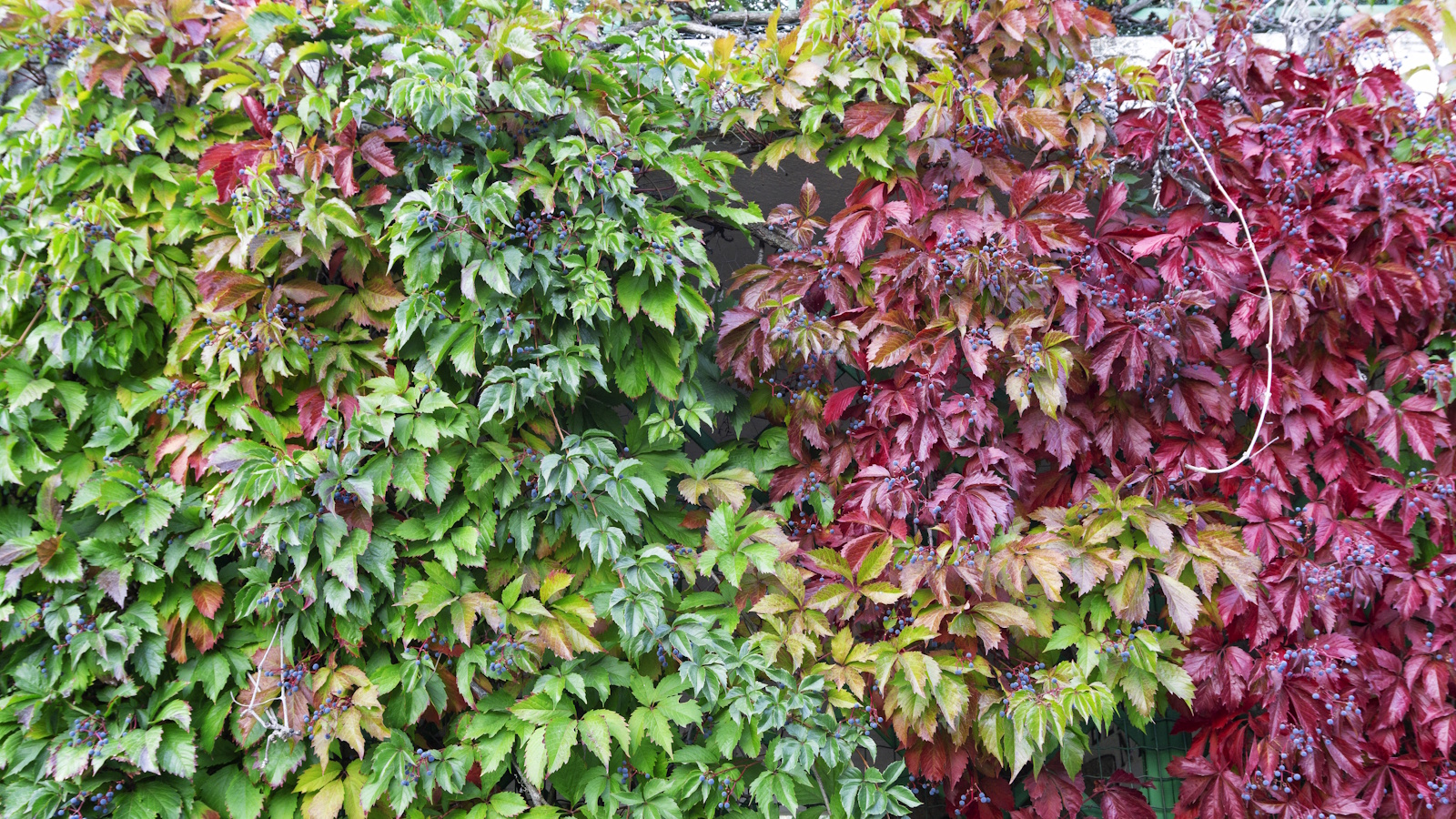 How to grow Virginia creeper – it may divide opinion, but this fast-growing, shade-tolerant vine will cover walls and fences in record time
How to grow Virginia creeper – it may divide opinion, but this fast-growing, shade-tolerant vine will cover walls and fences in record timeIf you are looking for spectacular fall color, Virginia creeper is the climbing plant to grow
By Thomas Rutter
-
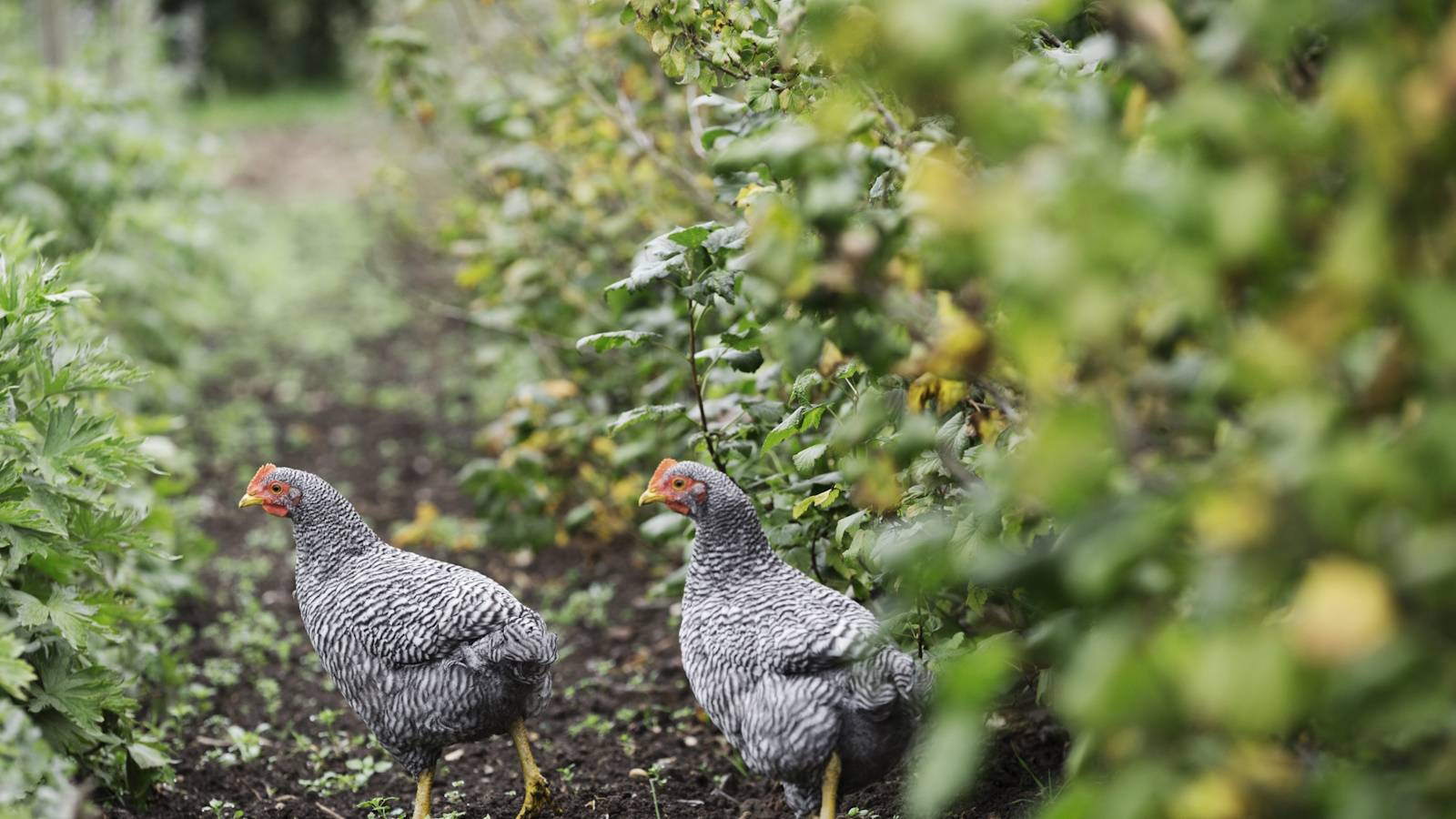 Best plants for a chicken run – 7 fragrant and floral plants for happy hens and beautiful coops
Best plants for a chicken run – 7 fragrant and floral plants for happy hens and beautiful coopsYour chicken run can be every bit as beautiful as your own garden, so long as you do your research first
By Kayleigh Dray
-
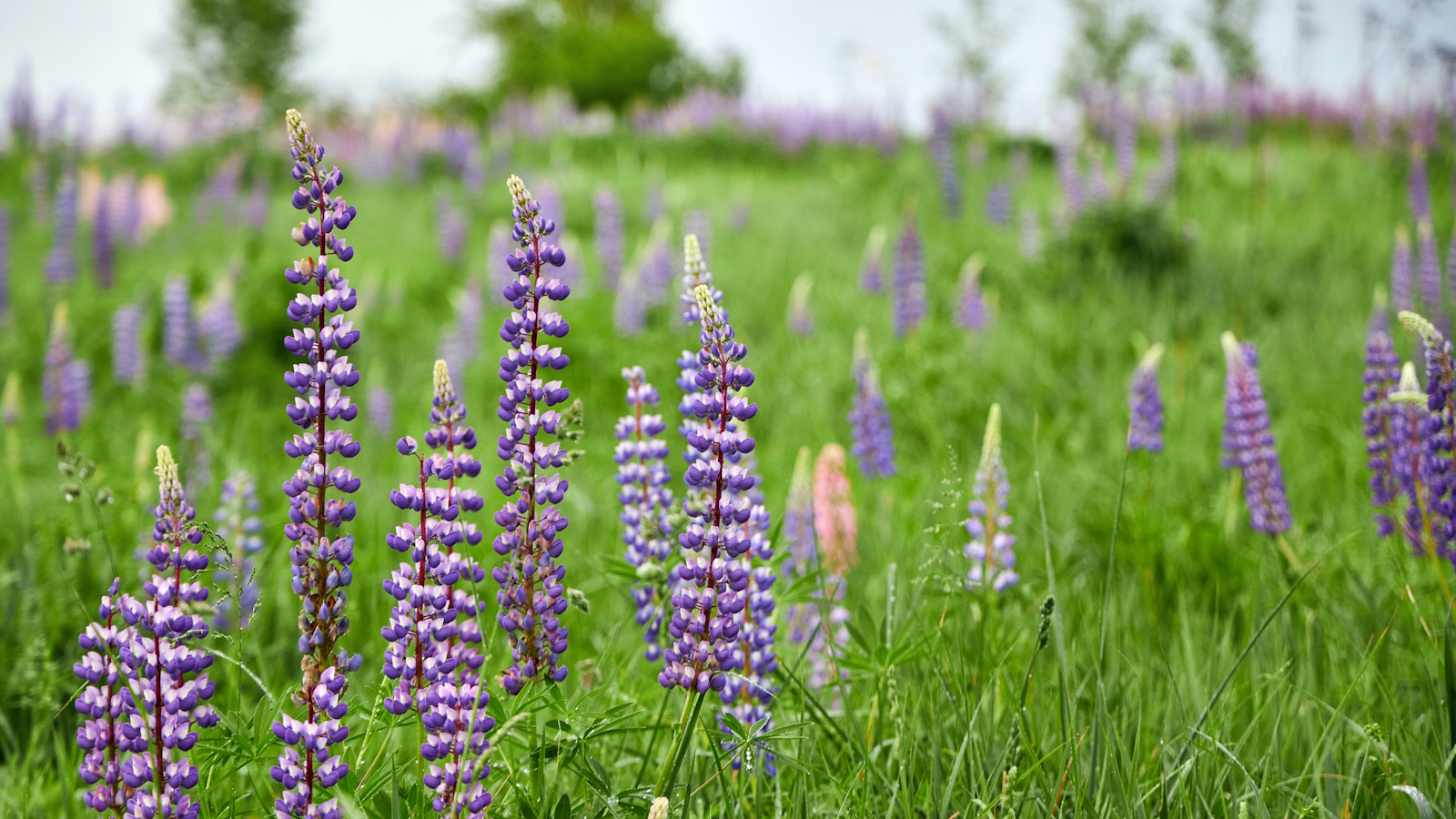 How to grow lupine – expert advice on growing this dramatic and vibrant cottage garden flower
How to grow lupine – expert advice on growing this dramatic and vibrant cottage garden flowerVibrantly colored flower stalks make swathes of lupines a sight to see in meadows and cut flower gardens alike
By Ellen Wells
-
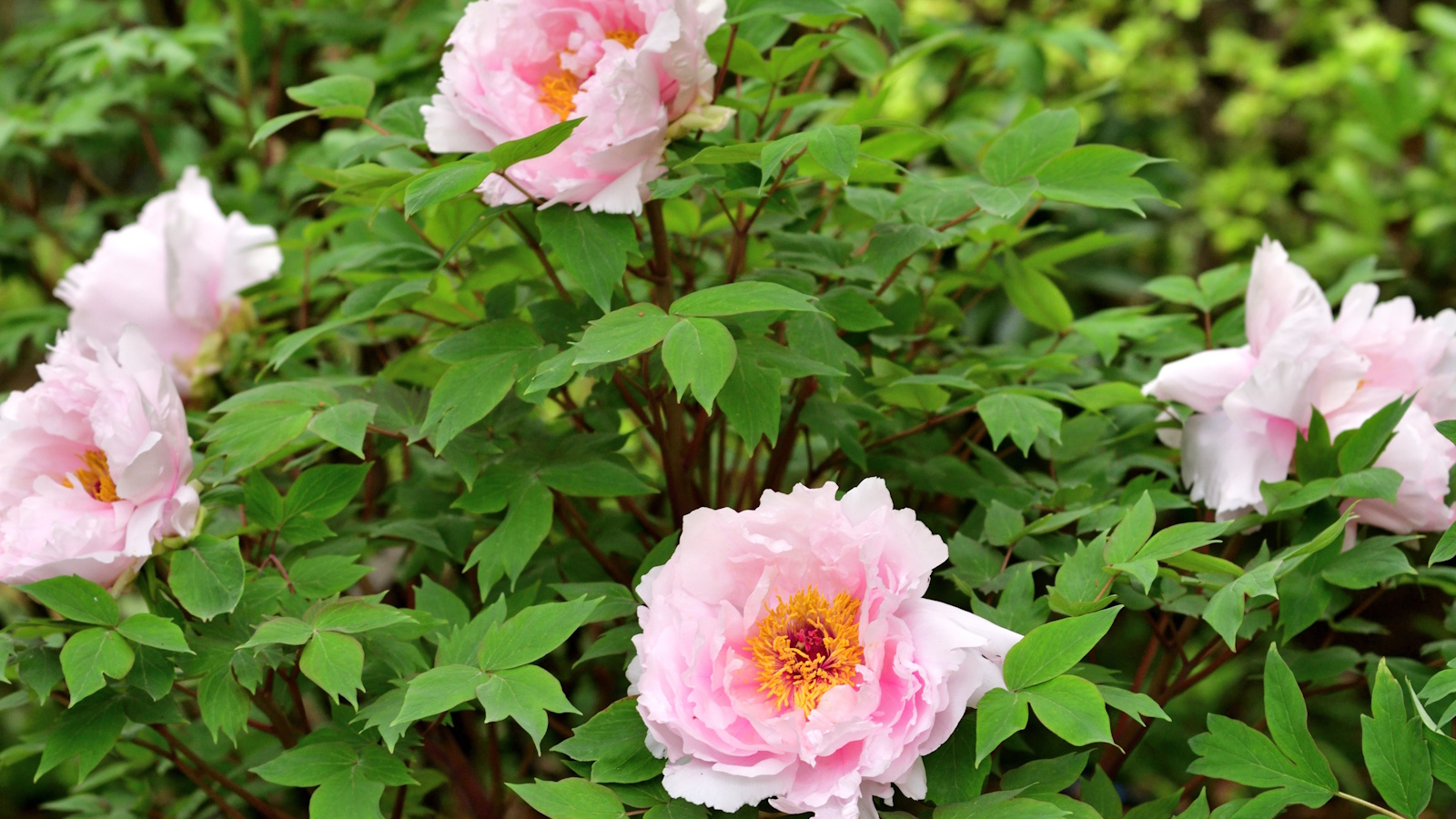 How to grow tree peonies in pots – for a show-stopping shrub that will thrive in partially shaded yards
How to grow tree peonies in pots – for a show-stopping shrub that will thrive in partially shaded yardsWith large, saucer-like blooms, tree peonies are the ultimate flowering shrub
By Thomas Rutter
-
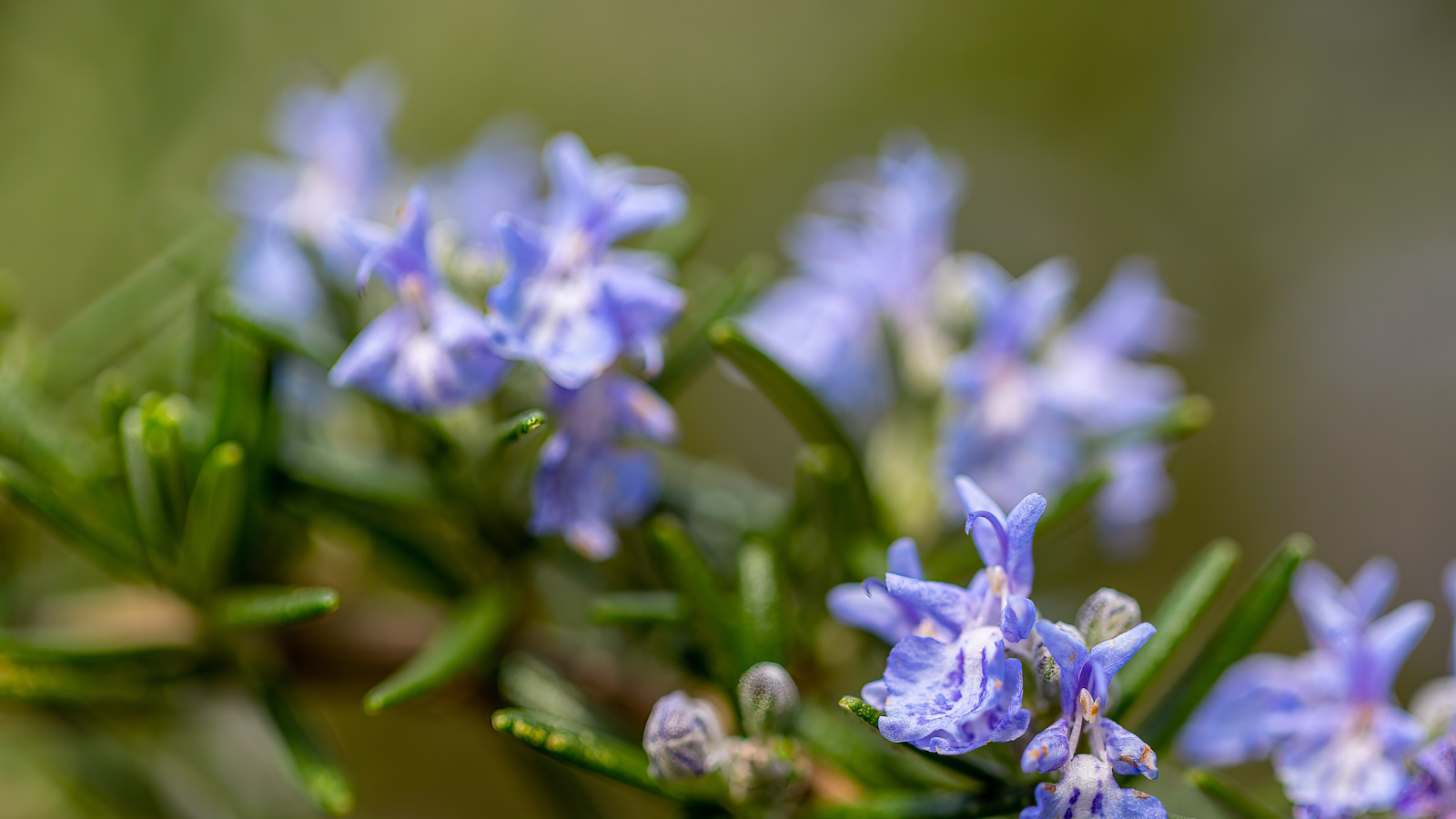 Can you revive woody rosemary plants? Expert pruning advice from a professional gardener to save old, leggy herbs
Can you revive woody rosemary plants? Expert pruning advice from a professional gardener to save old, leggy herbsWith the right pruning approach, old and woody rosemary plants can be brought back to life
By Thomas Rutter
-
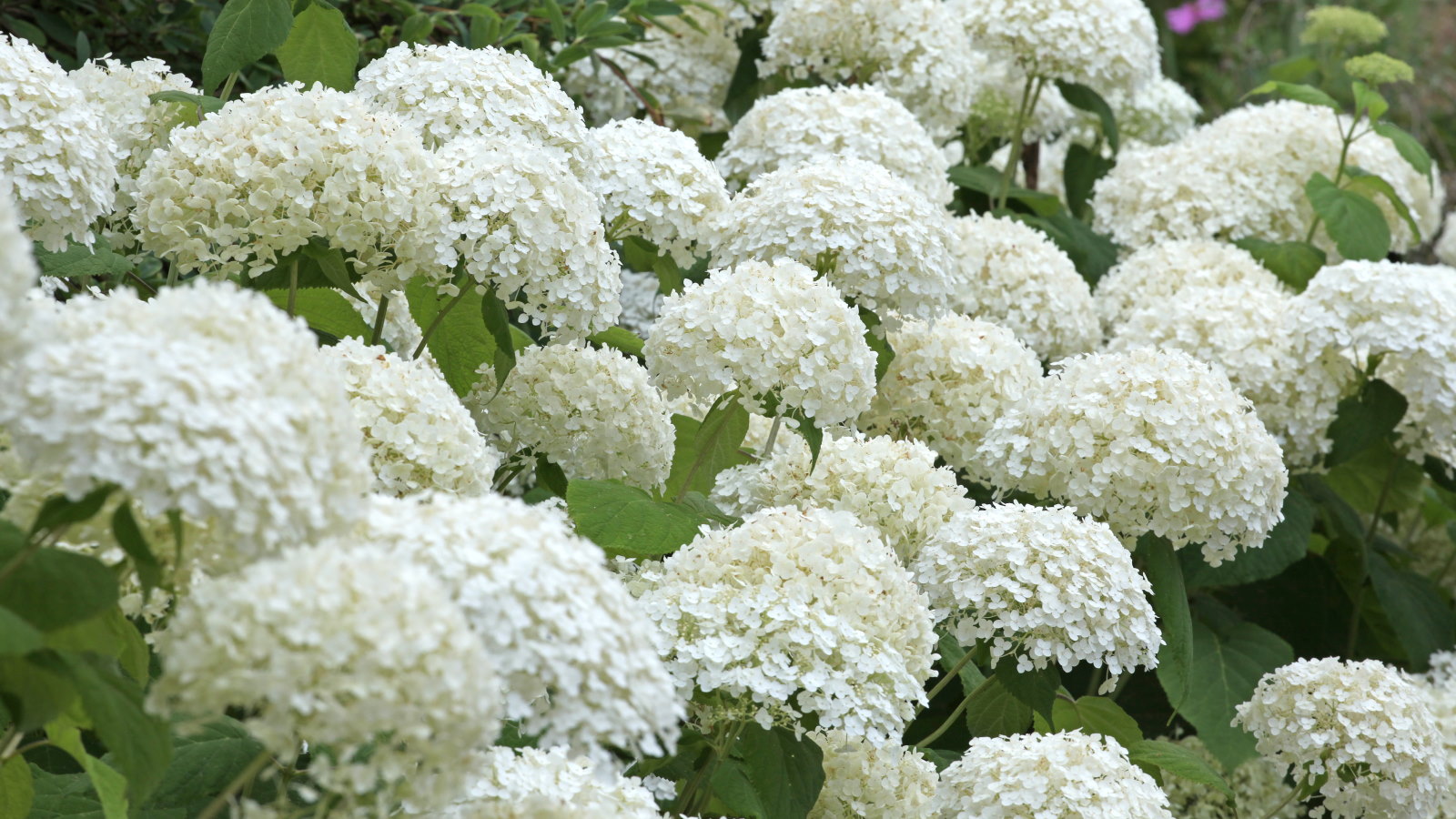 Your hydrangeas will flourish with bigger blooms and healthier growth thanks to this 1 natural material that is easy to use
Your hydrangeas will flourish with bigger blooms and healthier growth thanks to this 1 natural material that is easy to useDiscover why you should be using leaf mold to mulch hydrangeas
By Drew Swainston
-
 5 fast-growing tiny flowers – expert recommendations to fill your pots and borders with color in record time
5 fast-growing tiny flowers – expert recommendations to fill your pots and borders with color in record timeThese fast-growing tiny flowers prove that miniature can also be marvelous
By Thomas Rutter